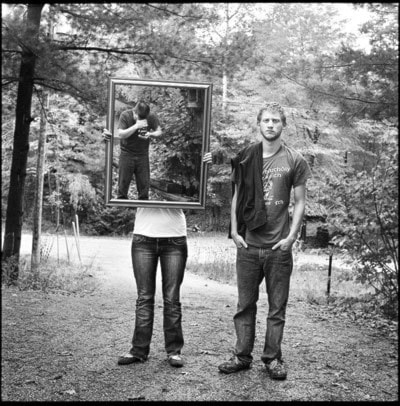FORT SELKIRK
‘This is the story as I know it.”
Don Trudeau begins each tale this way, mindful that his view is just one version of the past.
In this way, he recounted the history of Fort Selkirk, where he and his wife Audrey now work as caretakers.
The First Nation couple greets visitors, talk with them and make everyone feel welcome.
Some nights, around the campfire, Trudeau calls all the paddling travellers together and tells them stories.
As an elder he has a lot to tell — so far he’s written six books, there’s a seventh in the works and two more in his head.
In The Elder’s Tears, volume three of his The Shaman Speaks series, Trudeau laments that the wisdom of the past is not being passed on to the young.
At Fort Selkirk, Trudeau is doing his part.
At night, around his campfires, he tries to pass along his wisdom to all those who will listen.
“This is the history as I know it…”
Fort Selkirk is situated at the confluence of the Yukon and Pelly rivers, a site that has been used for at least 8,000 years.
The Northern Tutchone people used the site as a fish camp, for celebrations and would conduct trade with Athabaskan First Nations from the interior.
In 1852, Robert Campbell established a Hudson’s Bay Company trading post on the site.
Not happy about the increased competition from foreign traders, Tlingit warriors attacked the settlement.
No one was killed, but Campbell was placed in a canoe and sent adrift down the river.
The trader was eventually rescued, but it would be 40 years before another European settlement was built amid the ashes of the abandoned post.
The new fort grew steadily to about 1,200 people, mostly trappers and the hotels and businesses to serve them.
The Klondike gold rush increased river traffic, led to an RCMP detachment, and eventually the Yukon Field Force — 200 soldiers dispatched to assert Canadian sovereignty over mostly American miners.
The cliffs across the river still bear the scars of military target practice.
Located halfway between Whitehorse and Dawson City, Fort Selkirk became such an important settlement that it was once considered for the capital of the Yukon.
However, highway construction bypassed the steamer-reliant fort, and by the early 1950s Selkirk was abandoned.
The swift desertion means that the site remains relatively the same today as it was 50 years ago.
Visitors can explore old churches, stores, offices, machine shops, and cabins.
Dust tickles the nose and floats in the shafts of light that filter in through the old windows.
The creaky floorboards sing a ghost song as explorers read a 100-year-old newspaper pasted to the walls and wander among the scattered artifacts.
There is information littered on signs throughout the site but you never feel like you’re in a museum.
There’s more of a sensation of exploration and discovery, like stumbling on the well-preserved remains of a lost civilization.
The majority of this preservation can be attributed to one man, Danny Roberts, who moved to Fort Selkirk just as the last of its inhabitants moved upriver to Pelly Crossing.
Trapping in the winter and working on the river barges in the summer, Roberts lived at the site with his family and saw that it didn’t fall into disrepair.
Roberts soon came to be known as the mayor of Fort Selkirk, and when the Yukon government decided to make it a historic site it seemed fitting to employ Roberts as caretaker.
In conjunction with the government, the Selkirk First Nation launched a restoration project.
“Technically it’s not restoration,” said one of the carpenters from the site.
“Restoration tries to replicate the original techniques, but some of the original techniques weren’t that efficient.”
For example, the sod roofs on many of the cabins and old stables are notorious for holding moisture and rotting the roof.
The team now puts a modern membrane between the sod and roof plates to insure that their work will last much longer.
When sill logs are rotting, the restoration workers lift the cabin and replace them.
They also level foundations and make sure that all roofs, windows and doors are weather clad.
“It’s an ongoing process. You’ll never be finished,” said the carpenter who spends two months a year at the work.
There are 34 buildings of historic significance on the site and a management committee creates the restoration schedule.
Priority is given to saving buildings; esthetics comes secondary to structural integrity.
Through this important work the site remains much as it did in 1952 when Roberts moved in.
Later in life, Roberts was unable to handle the harsh, lonely winters in Fort Selkirk but would return each and every summer.
The last day of Robert’s life was spent at his home in Fort Selkirk. He passed away in August 2000.
Working as a caretaker with her husband Audrey, Robert’s sister, sees that his legacy lives on.
The Trudeaus continue his tradition of welcoming all those that come to visit to share in the site’s history.
“It’s a place that was founded by our forefathers and they didn’t choose their land lightly,” Trudeau tells young and old around the campfire.
“This place is very special to us.”
